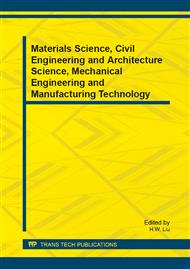p.458
p.462
p.466
p.470
p.475
p.479
p.483
p.487
p.492
Hydrodynamic Impact on Pearl River Estuary from HZM Bridge
Abstract:
The HZM(Hongkong-Zhuhai-Macao) bridge connects Hongkong, Zhuhai and Macao district, and it strctchs across the Pearl River estuary. A lot of piers and three large artifical islands would have some impact on the hydrodynamic environment in the Pear River estuary. In this paper, a 2D tidal current numerical model is introduced to simulate the hydrodynamic impact from the HZM brdige. The simulated results show that the Hydrodynamic influence is concentrated on the 5.0 km range from downstream to upstream nearby the navigation zone and the 1.0 km range of bridge site in not-navigation zone, and the tidal range reduction is limited 0.03m and the tidal prism reduction is not more than 1% in the Lingding Sea after the HZM bridge constructed. Therefore, the HZM bridge has little influence on the distribution of hydrodynamic environment in the Pearl River estuary.
Info:
Periodical:
Pages:
475-478
Citation:
Online since:
January 2014
Authors:
Keywords:
Price:
Сopyright:
© 2014 Trans Tech Publications Ltd. All Rights Reserved
Share:
Citation:


